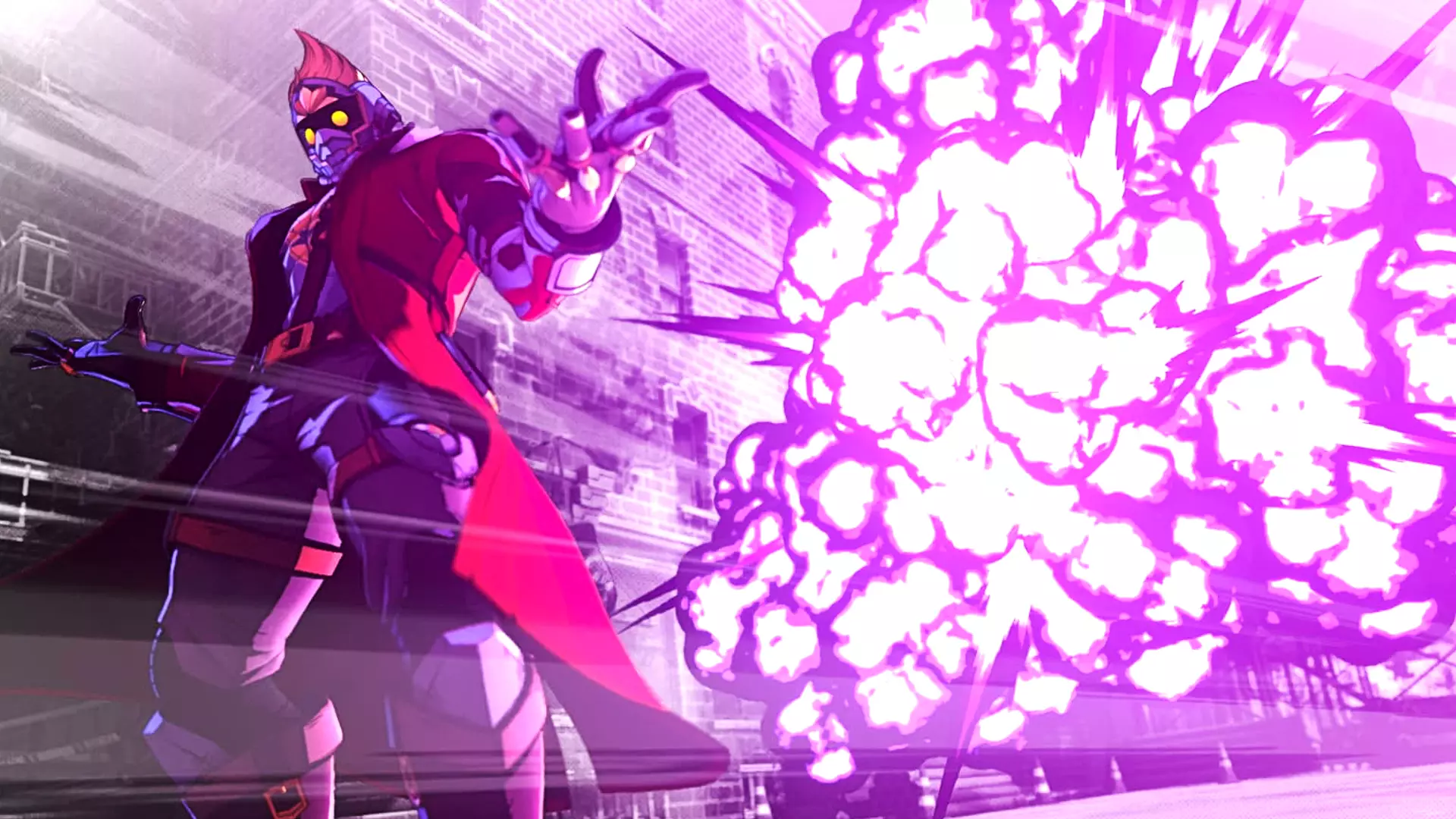In the ever-evolving landscape of video games, the blending of various art styles and gameplay mechanics has become a hallmark of innovation. The recent Sony PlayStation State of Play showcase unveiled a standout concept: *Marvel Tokon: Fighting Souls*. This upcoming 4v4 tag fighter cleverly integrates Marvel superheroes with a unique anime-inspired aesthetic that is set to redefine expectations. It’s not merely a nostalgic trip for fans but a bold step forward that highlights how diverse artistic influences can converge to create something fresh and exciting.
While the world of fighting games often leans towards hyper-realistic graphics or traditional cartoon styles, *Marvel Tokon: Fighting Souls* distinguishes itself through its vibrant, anime-esque visual presentation. This design choice has sparked much discussion, particularly since Arc System Works, the developer behind this title, originally proposed a style that closely adhered to the traditional comic book visuals. Producer Takeshi Yamanaka disclosed that Marvel Games, specifically Michael Francisco, sought something more aligned with Arc System Works’ established aesthetic framework. This transformative dialogue showcases the dynamic exchanges that can lead to groundbreaking concepts in game development.
The Power of Collaboration
What stands out in the development process of *Fighting Souls* is the synergy between the two creative powerhouses, Arc System Works and Marvel Games. Their collaborative effort exemplifies how effective communication can pave the way for innovative designs. By embracing the anime approach, not only did Arc System Works stay true to their artistic identity, but they also paid homage to a culture that has mastered the art of storytelling through visual means. Francisco’s encouragement for the team to portray Marvel in a way that resonated with their own sensibilities was instrumental. His reaction upon seeing the transformed designs reflects the emotional investment that creators have in their work.
The use of anime-style visuals is not just about aesthetic appeal; it’s about creating a distinct brand identity for *Fighting Souls*. Characters like Iron Man are reimagined within this context, embracing a design that resonates more with anime culture while still remaining fundamentally recognizable to fans. This approach allows the game to stand apart in a crowded marketplace, emphasizing originality over imitation. The choice to meld elements of traditional Marvel lore with the rich tapestry of anime influences suggests a thoughtful and well-executed strategy aimed at capturing a global audience.
Cultural Significance: From Japan to the World
Reed Baird, a senior producer at PlayStation Studios, encapsulates the ethos of the project with the mantra, “from Japan to the world.” This sentiment speaks volumes about the global perspective that modern gaming increasingly embraces. In an age where cultural boundaries are blurred by technology, games like *Marvel Tokon: Fighting Souls* serve as conduits for cross-cultural collaboration. The game represents not merely a fusion of art styles but a narrative bridge connecting the unique storytelling traditions of both the East and West.
It is significant that Baird and his team recognize the importance of cultural integrity in a joint project of such magnitude. By taking gameplay mechanics that have flourished in Japan and combining them with iconic IPs, they create not just a game, but a cultural exchange. This scenario is especially meaningful in an industry that often grapples with representation and authenticity. The crafting of this game serves as proof that leveraging various artistic influences can yield spectacular results—results that honor the original texts while broadening their appeal.
Setting a New Standard for Fighting Games
As the anticipation builds around *Marvel Tokon: Fighting Souls*, it raises critical questions about the future of fighting games. Will we see more titles embrace distinct art styles that challenge conventional norms? The success of this anime-influenced aesthetic could catalyze a new wave of creativity within the genre. By prioritizing innovation over predictability, developers may find themselves exploring exciting new avenues that resonate deeply with their audiences.
In a world saturated with sequels and reboots, the audacity to rethink familiar properties through a different lens is not only refreshing but also necessary. The marriage of Marvel superheroes and anime artistry transcends mere gameplay mechanics; it forges new pathways for storytelling, character development, and immersive experiences. By exploring this intriguing amalgamation, *Marvel Tokon: Fighting Souls* sets a precedent that could shape the gaming landscape for years to come.


Leave a Reply